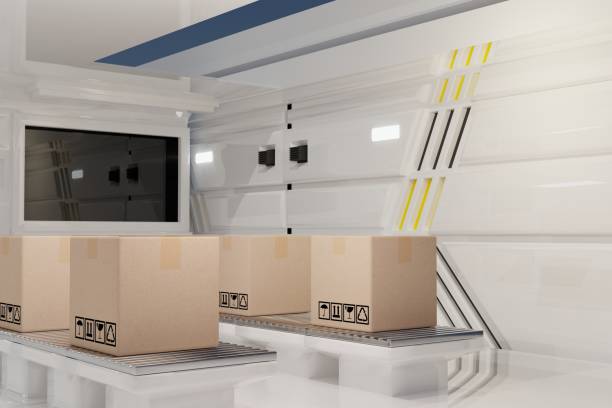How Picking and Packing Powers Warehouse Jobs and Smooth Deliveries: A Practical Guide
Efficient picking and packing processes are essential to keeping warehouse operations running smoothly and ensuring fast, accurate order fulfillment—especially in the growing e-commerce and logistics industries. This guide offers a closer look at how different picking methods and smart packing strategies work together to support timely deliveries, reduce errors, and contribute to a well-organized supply chain environment.

What are the key warehouse picking methods?
Warehouse picking is the process of retrieving items from storage to fulfill customer orders. Several picking methods are employed in modern warehouses, each suited to different types of operations:
-
Single-order picking: A warehouse associate picks items for one order at a time, moving through the warehouse to collect all required products.
-
Batch picking: Multiple orders are grouped together, and items are picked for several orders simultaneously, increasing efficiency.
-
Zone picking: The warehouse is divided into zones, with pickers assigned to specific areas, passing orders between zones as needed.
-
Wave picking: Similar to batch picking, but orders are released in waves based on factors like shipping schedules or order priorities.
These warehouse picking methods are designed to optimize efficiency and accuracy, helping to streamline the overall packing and shipping process.
How does the packing and shipping process work?
Once items are picked, they move to the packing stage of the warehouse operation. The packing and shipping process typically involves the following steps:
-
Order verification: Ensuring all picked items match the customer’s order.
-
Packaging selection: Choosing appropriate boxes, envelopes, or other containers based on item size and fragility.
-
Item protection: Adding bubble wrap, air pillows, or other cushioning materials to prevent damage during transit.
-
Sealing and labeling: Securely closing packages and attaching shipping labels with accurate destination information.
-
Sorting: Organizing packed orders by carrier, shipping method, or destination.
-
Loading: Transferring sorted packages to delivery vehicles or designated pickup areas for shipping partners.
This systematic approach to the packing and shipping process helps ensure that orders are prepared correctly and efficiently for their journey to the customer.
What does a typical warehouse associate job entail?
A warehouse associate job is multifaceted and crucial to the smooth operation of a warehouse. Key responsibilities often include:
-
Picking and packing orders using various methods and equipment.
-
Operating material handling equipment such as forklifts or pallet jacks.
-
Maintaining inventory accuracy through regular counts and updates.
-
Receiving and processing incoming stock and materials.
-
Ensuring a clean and organized workspace to promote efficiency and safety.
-
Collaborating with team members to meet productivity goals and deadlines.
Warehouse associates may also be involved in quality control checks, returns processing, and assisting with shipment preparation. The role requires physical stamina, attention to detail, and the ability to work in a fast-paced environment.
How has e-commerce impacted warehouse logistics?
The rise of e-commerce has significantly transformed warehouse logistics, leading to several key changes:
-
Increased automation: Many warehouses now utilize robotics and AI to enhance picking and packing efficiency.
-
Expanded storage solutions: Vertical storage systems and dynamic shelving help maximize space in e-commerce warehouses.
-
Real-time inventory management: Advanced software systems provide up-to-the-minute stock levels and order tracking.
-
Faster fulfillment expectations: Same-day and next-day delivery demands have accelerated picking and packing processes.
-
Omnichannel integration: Warehouses now manage inventory for both online and brick-and-mortar sales channels.
These advancements in e-commerce warehouse logistics have created new job opportunities and skills requirements for warehouse workers, driving the need for ongoing training and adaptability.
What are some tips for improving warehouse efficiency?
To enhance warehouse operations and support smooth deliveries, consider implementing these efficiency-boosting strategies:
-
Optimize layout: Arrange inventory strategically, placing fast-moving items in easily accessible locations.
-
Implement cross-docking: When possible, transfer incoming products directly to outgoing shipments without long-term storage.
-
Utilize technology: Adopt warehouse management systems (WMS) and barcode scanners to reduce errors and increase speed.
-
Train for versatility: Cross-train employees in multiple warehouse roles to improve flexibility and coverage.
-
Regularly analyze data: Use performance metrics to identify bottlenecks and areas for improvement in the picking and packing process.
By focusing on these areas, warehouses can significantly enhance their efficiency, leading to faster order fulfillment and improved customer satisfaction.
How do warehouses handle peak seasons and fluctuating demand?
Warehouses must be prepared to manage seasonal peaks and varying demand levels to maintain smooth operations:
-
Temporary staffing: Hiring seasonal workers to supplement the core team during busy periods.
-
Flexible scheduling: Adjusting shift patterns and overtime to accommodate increased workload.
-
Advanced forecasting: Using historical data and predictive analytics to anticipate demand spikes.
-
Inventory management: Ensuring adequate stock levels of popular items during peak seasons.
-
Process streamlining: Implementing more efficient picking and packing methods during high-volume periods.
-
Technology utilization: Leveraging automation and AI to handle increased order volumes without compromising accuracy.
By employing these strategies, warehouses can effectively manage fluctuations in demand while maintaining high standards of service and delivery performance.
In conclusion, the picking and packing processes are vital components of warehouse operations, directly impacting job roles, efficiency, and the overall success of e-commerce and logistics businesses. As the industry continues to evolve, adaptability and continuous improvement in these areas will remain crucial for warehouses to meet the growing demands of online retail and ensure smooth, timely deliveries to customers worldwide.




